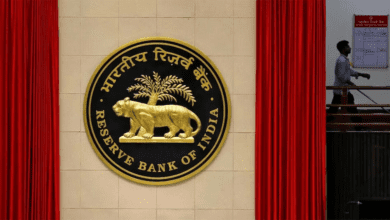International investors buying Indian bonds create a stir in markets
India, a nation long eager to shield itself from hot money flows, is already seeing market changes as a result of the money flooding in from its historic admittance into major global bond indexes.

Since JPMorgan Chase & Co.’s historic announcement in September, foreign investors have poured around 780 billion rupees ($9.4 billion) into qualifying sovereign bonds and are starting to move up the ownership list.
Foreign currency reserves reached a record high, corporate bonds are outperforming peers, and the rupee has weathered the blow of a wide rise in the dollar.
In advance of the major index shift at the end of June, the following charts illustrate the current situation in Indian markets.
“This is a noteworthy occasion. The eagerly anticipated addition of India to the index ought to encourage further involvement from outside investors, according to Chidu Narayanan, head of Wells Fargo & Co.’s macro strategy for Asia-Pacific. The rupee would be supported by inflows of around $25 billion for Indian bonds by the middle of next year, he added.
According to statistics published by Bloomberg, the inflow of capital has contributed to the Indian Fully Accessible Route bonds, or FAR for short, which are expected to enter the benchmarks, returning 2.76% in dollar terms this year. Both a worldwide index of developing sovereign debt and a measure of corporate and sovereign notes in emerging Asia have underperformed them.
They will rank among the top performers in local currency developing market government debt in 2024, thanks to the inflows.
Before the June deadline, senior economist at DBS Group Holdings Ltd. Radhika Rao noted that “you’re seeing a bit of frontrunning.” The majority of the flows are still anticipated to arrive “when the inclusion starts” and at the end of the year, when the JPMorgan index will represent India’s full 10% weight.
The Reserve Bank of India’s involvement has escalated as a consequence of the large inflows; it has been purchasing the incoming dollar flows, pushing its foreign reserves to a record $642.5 billion. The main goal of the intervention is to protect the rupee against erratic movements.
According to Bloomberg Economics, the Reserve Bank of India has increased its purchases in recent weeks, spending $20 billion in total since the beginning of February.
Since sovereign notes are mostly priced off corporate bonds, corporate bonds have also profited from inflows into government debt. Since the release of the index, the yield on the highest-rated 10-year notes has decreased by around 30 basis points.
Beginning next year, Bloomberg Index Services Ltd. will include a small number of Indian bonds in its local currency index for developing markets. The parent business of Bloomberg Index Services Ltd., which manages indexes in competition with those from other service providers, is Bloomberg LP.







